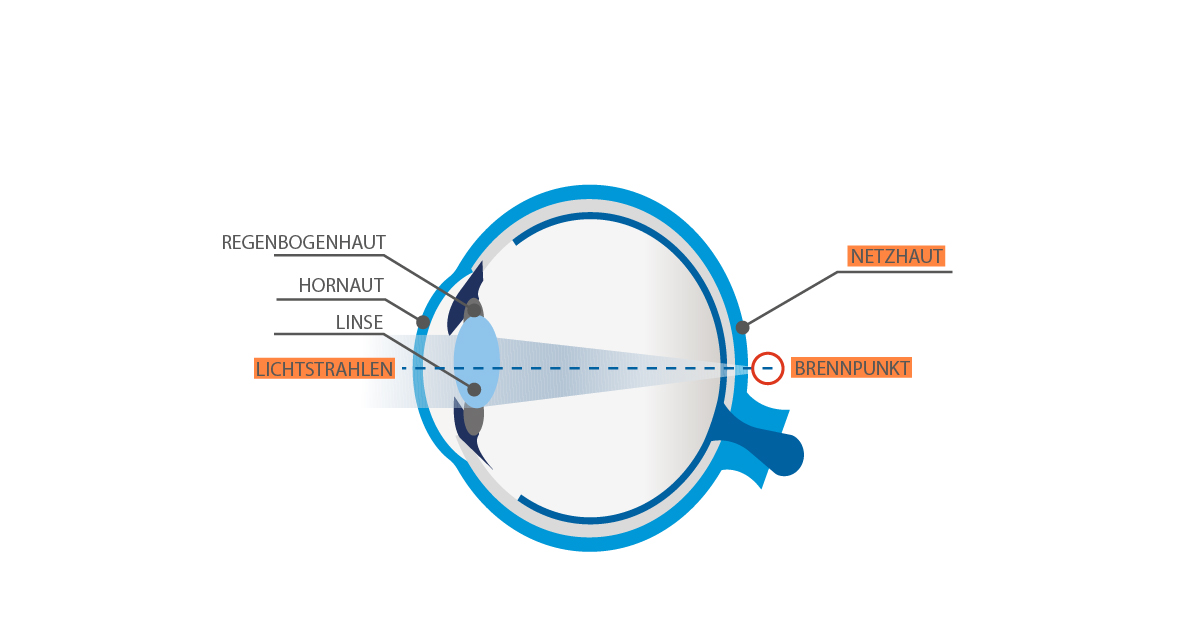How does presbyopia arise?
In order to be able to see clearly up close, our eye lens has to curve. From the age of about 45, however, the elasticity of the natural lens decreases. As a result, with the onset of presbyopia, it becomes increasingly difficult for us to see clearly at short distances. Incoming light rays are then focused behind the retina instead of on it, causing blurred vision at close range.
Since presbyopia is a natural aging process of the eye, the increasing deterioration of vision cannot be stopped. Many patients then decide to have a lens exchange.


What are the symptoms of presbyopia?
People with presbyopia can see clearly at a distance (“far-sighted”), while near vision becomes increasingly limited.
The most common symptoms of presbyopia are:
- Nearby objects become blurred
- Sufferers hold objects farther away so they can see them better
- Those affected need more light to be able to see clearly up close
- Headaches are caused by constant eye strain
Lens treatments for presbyopia
Presbyopia can be corrected by implanting multifocal lenses that replace the body’s own lenses. After multifocal lens treatment, patients can usually see objects both far away and up close. This means that most people can do without visual aids in everyday life or reduce them to a minimum.
Both eyes are treated on an outpatient basis approximately one week apart. Lens implantation only takes about 10 minutes per eye.
Another advantage, in addition to eliminating presbyopia, is that after multifocal lens treatment, cataracts, which are usually also age-related, can no longer occur.
Presbyopia and other ametropia
Lens implantation with multifocal lenses is also suitable for presbyopic patients who are also short-sighted or far-sighted and/or suffer from astigmatism. In one treatment, both the existing ametropia and presbyopia can be corrected.
Frequently asked questions about presbyopia (FAQ)
From the age of about 45, the core of our eye lens becomes increasingly hard and therefore less flexible. Then we find it harder to curve the lens, but this is important for sharp close-up vision. Incoming light rays are then no longer bundled on but behind the retina. A multifocal lens implantation can remedy this and enable sharp vision at all distances again.
Presbyopia is a natural aging process of the eye. The elasticity of the lens decreases continuously from the age of about 45. This slowly progressing process cannot be prevented. In a multifocal lens treatment, the doctor replaces the aging natural lens with a highly functional artificial lens and sharp vision without visual aids can thus be made possible again up close.
Lens treatment to correct presbyopia is already possible when the first symptoms of presbyopia are diagnosed. Because unlike other ametropia, there is no need to wait for the visual acuity to stabilize. On the contrary – the sooner patients get treatment, the sooner they can enjoy their life without glasses.
The costs for a multifocal lens treatment to correct presbyopia at CARE Vision are around 2.700 euros per eye (billing according to GOÄ after the treatment has been completed).
